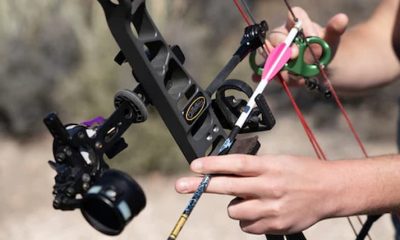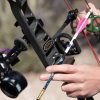Other
Everything You Need to Know About the Drill Press
If you’re in the trades, one of the first lessons you learn is having the right tool for the job. Hand drills are portable, and versatile and offer just the right amount of power to drill holes in common materials you’d find at the job site, or in DIY projects. Their limitations though soon become evident when you need to drill, bore, countersink and work in thicker or harder pieces of metals, wood and plastics, often with more precision, stability, consistency and at higher speeds. This is where drill presses come in. They’re staples in many wood and metalworking shops and some like magnetic presses are portable and seen in demanding tasks on site.
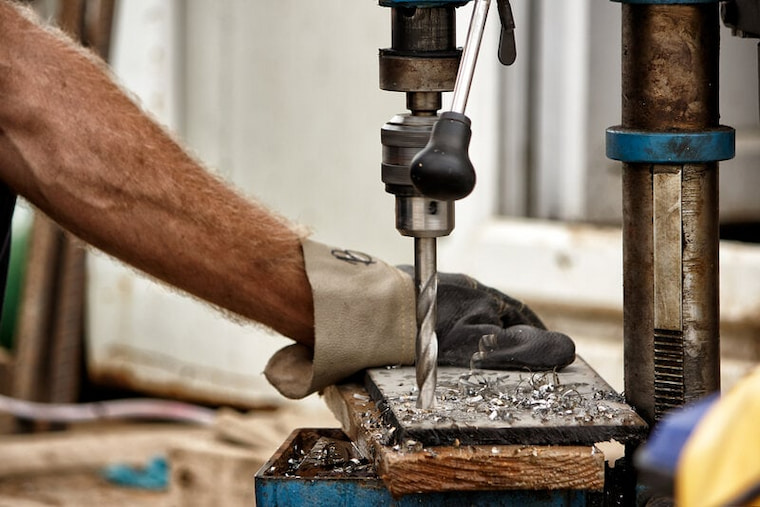
Parts and How Drill Presses Work
Besides the differences in size and power, drill presses can be considered motorised versions of smaller corded and cordless drills. They are either small-ish benchtop types or stationary presses that take up quite a bit of floor space. When fitted with the right drill bits, they can drill holes to varying depths and widths in just about any material imaginable. And they do this with a level of precision, adjustability and repeatable results that no handheld tool can match.
To find out how a drill press works, basic knowledge of the parts helps. The ability to drill holes in larger diameters and in harder materials stems from the heavy-duty build. The basic parts include a column attached to a sturdy metal base, a high-powered motor that turns a spindle drive, the drill chuck and attached bit, and a table on which the material sits.
Drilling involves turning a handwheel to lower the chuck as the bit works its way into the workpiece. The high force makes easy work of thicker and harder materials, and depth accuracy is increased as workpieces are secured to the table bed. Getting the required results is also aided by a high level of adjustability. The table can be placed at varying heights to accommodate workpieces of different sizes, the spindle and attached chuck can be lowered to different distances (or what is known as spindle stroke) and motor speeds can be changed to suit different drill bits. In addition, table beds have adjustable angles, so work can be done at an incline.
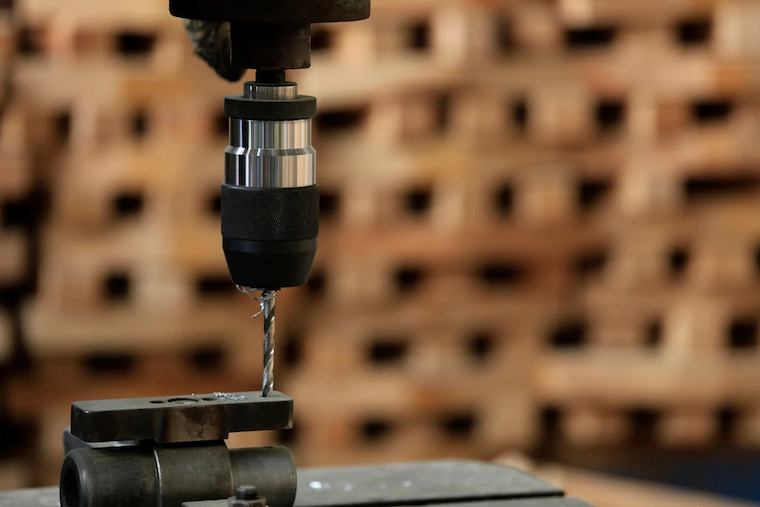
What They Can Do
Depending on the drill bit attachment and the type of drill press, the machines can perform several different drilling and cutting tasks. This includes:
- Spot, centre and step drilling
- Boring
- Countersinking, spot facing and counterboring
- Reaming, finishing and tapping
- Milling
The high accuracy additionally allows for chamfering, mortising, edge finishing, as well as general deburring and stock removal. Moreover, drill bit versatility allows for polishing, sanding and dusting.
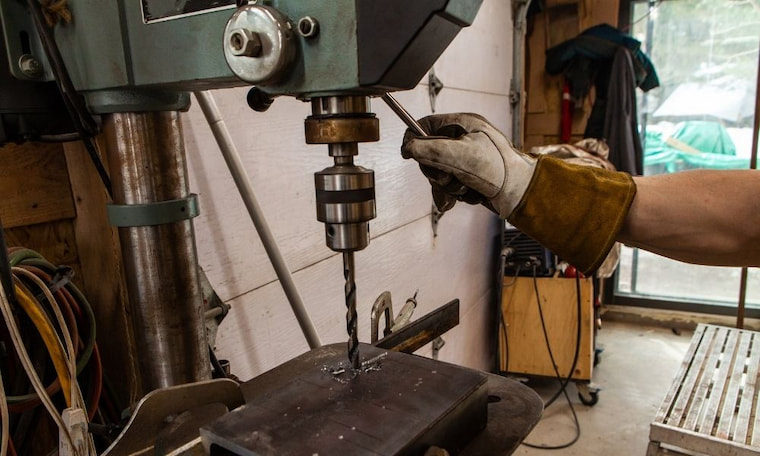
Types of Drill Press Machines
There are several categories and types of drill presses. They differ in overall power output, speed, features, size and ease of use.
Benchtop drill presses are meant to be mounted on workbenches or tables, are smaller in size, and are predominantly used in smaller workshops and for lighter tasks. They often have belt-driven spindles powered by motors averaging between 0.5 and 1hp, adjustable speed settings, and features like tiltable tables for drilling versatility. Variations include the hand, radial, magnetic and mini drill press, each with its own set of features and benefits that extend their use. Benchtop radial presses for instance have arms that swivel around the centre column and can be adjusted for height, making them easy to use on workpieces of different types and sizes.
Floor-standing types are much larger, have more powerful motors and are intended for heavy-duty use in large-scale operations. They’re also more expensive. The high-powered motors (some exceeding 5hp) and the ability to work with larger drill bits are ideal for thicker and harder metals. Advanced features additionally help with drilling accuracy and speed. Common variations include gang drill presses, fitted with two or more drilling heads and ideal for drilling, tapping and reaming with minimal adjustments, and floor-standing mill drills that also allow for milling and stock removal. Bear in mind that the categories mainly refer to size, portability (or lack of) and power output, but there can be benchtop and floor-standing variations of the same machine, though with obviously different capabilities.
When choosing between the different types consider where and how often the press will be used, the type of work you do, and the materials you generally work with. This determines specifics like power output, motor speeds and drive type, accuracy and the ability for micro-adjustments, spindle stroke (more means easier drilling into harder materials), table versatility, and whether they use keyed or keyless chucks.
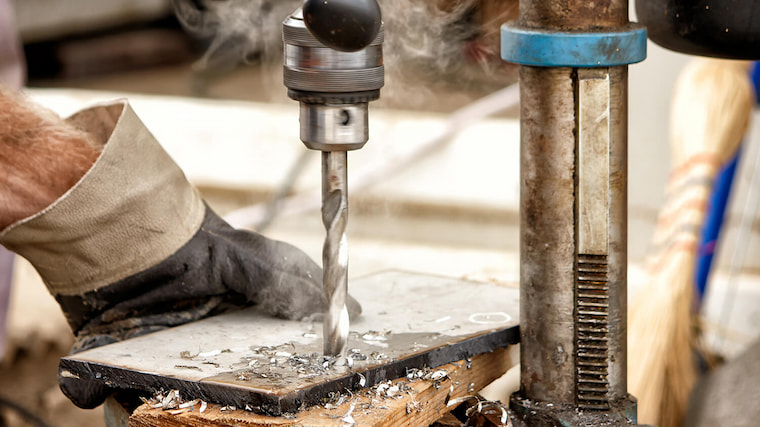
Advantages They Provide
Drill presses are larger, more expensive and heavier than hand drills. But they also have a lot going for them:
- Precision – the ability for a range of adjustments, a wide scope of bit sizes, and features like tilting tables and variable speeds means holes of any type can be achieved with very high precision.
- Control – precision is dependent on control. Presses allow operators a higher level of control over different parameters, such as drill speed, to achieve the desired results.
- Speed and consistency – these presses are ideal for repetitive and high-volume drilling tasks since they allow for high operational speeds and low setup times.
- Wide range of holes – besides drilling, the machines are used in common tasks like boring and countersinking, so offer more versatility.
- Higher safety and less fatigue – using hand drills can be tiring. Drill presses, on the other hand, are easier and more comfortable to operate and require much less effort. They also have a suite of safety features to prevent injuries or damage to workpieces.
- Robust build – not only are they built to a higher standard and last longer, but presses are easier on drill bits and have the power to drill into thicker materials.
Writing for the blog since 2012, Chris simply loves the idea of providing people with useful info on business, technology, vehicles, industry, sports and travel – all subjects of his interest. Even though he sounds like quite the butch, he’d watch a chick flick occasionally if it makes the wife happy, and he’s a fan of skincare routines though you’d never have him admit that unless you compliment his impeccable skin complexion.





